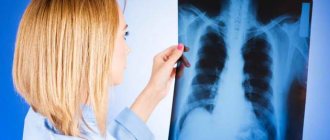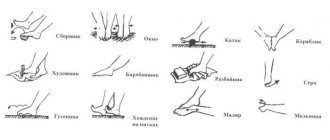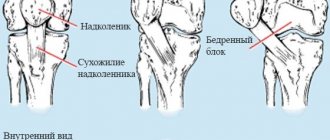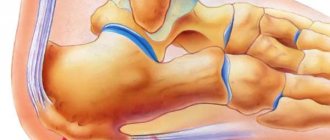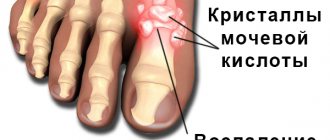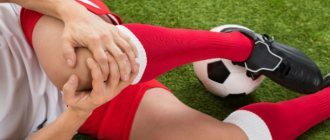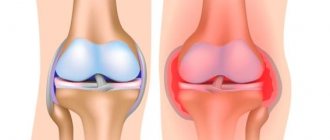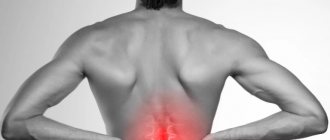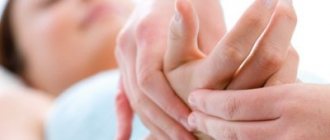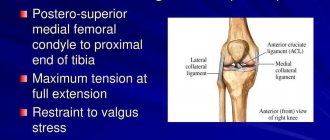Lower extremities are often the cause of pain in people of any age. The problem intensifies with age, when major degenerative diseases appear. One common symptom is pain in the thigh muscle. However, there are many reasons for such an unpleasant manifestation, and in each case an individual approach to therapeutic measures is needed.
Causes and diagnoses
Painful sensations in the femoral muscle can occur in many pathological situations. The reasons leading to this symptom are best divided into several groups that have a common mechanism for the formation of the problem. The main factors that lead to pain in the thigh muscle:
- diseases of the musculoskeletal system : spinal osteochondrosis, coxarthrosis, intervertebral hernia and other diseases resulting from degenerative-dystrophic involutional changes in osteochondral tissue;
- systemic connective tissue diseases . Any disease from this group can cause pain in the femoral muscle, but more often the symptom is provoked by dermatomyositis or systemic scleroderma. Secondary pain syndrome is characteristic of ankylosing spondylitis, as an immuno-inflammatory process;
- traumatic injuries . A group of diseases that are caused by acute or blunt mechanical impact: ruptures and sprains of muscles and ligaments, bone fractures, bruises;
- local inflammatory processes - myositis. Often, under the influence of microorganisms, isolated damage to the femoral muscle is observed;
- vascular pathology . Various thromboses, varicose veins or phlebitis can cause pain in the thigh muscles, as local inflammation with swelling occurs around the vessel in the tissues;
- parasites _ Worms can live and multiply in muscle tissue. The most severe pain syndrome is caused by Trichinella, but filariae and cysticerci can also lead to unpleasant sensations in the femoral muscle;
- rare diseases: congenital and acquired diseases that occur in a limited number of people and are associated with genetic abnormalities. This group includes thrombocytopathies, autoimmune processes in the hip, malignant tumors, and limb shortening.
Since there are so many causes of pain in the thigh muscles, it is difficult to determine the groups of people at risk of developing the disease. However, degenerative-dystrophic processes in the musculoskeletal system are associated with the ongoing involutional changes in the body.
How it manifests itself
Depending on the cause that caused the pathological process, symptoms occur differently. What is common is only the fact of pain, but the features of its appearance and course vary significantly. The prognosis for complete recovery is equally varied, since some diseases even threaten the patient’s life. Therefore, it is impossible to independently understand the etiological features of painful sensations, and delay in contacting a specialist can lead to serious complications.
A common etiological group causing clinical manifestations is musculoskeletal degeneration. Characteristic symptoms:
- pain in the muscles of the thigh and buttocks;
- moderate pain that worsens with physical activity;
- restriction of movements in the lumbar spine or hip joints;
- clear irradiation of pain - from above from the spinal column to the buttock and down to the femoral muscle;
- There are no external changes in the lower limb, but in advanced stages, when the pain syndrome subsides, atrophy of muscle fibers is observed.
Pain in the thigh muscle is not associated with direct damage to the leg; it is of a secondary irradiating nature. The main pathological process is located in the spine or hip joint.
Hernia.
One major cause of concern for hip pain is systemic immune inflammation. It is characterized by:
- damage to muscles and joints;
- often a symmetrical process;
- low-grade fever is possible;
- moderate pain syndrome;
- compactions upon palpation in muscle tissue;
- long-term persistent course and low response to therapeutic measures.
The most common cause of dermatomyositis is hamstring pain or flexor damage. In addition to pain, it is characterized by changes in the skin and sharp deviations in acute phase test parameters.
Painful areas.
Injuries are common in people of all ages. In all cases, there is a clear connection with the damage: unsuccessful movement, severe physical stress or mechanical impact. Traumatic pain is characterized by:
- acute onset;
- sharp pain;
- external changes – swelling, hematoma;
- short-term nature of pain;
- quick effect of treatment.
In typical situations, distinguishing traumatic injury is not difficult. However, every injury requires a responsible approach to treatment measures.
Pain in the area of the femoral muscle associated with vascular pathology is extremely dangerous. Typically, an acute onset and severe swelling of the leg is typical of deep vein thrombosis. It occurs specifically in the area of the femoral vessels, so muscle pain always accompanies the pathological process. A thrombus in a vein is unstable; with certain movements and even for no apparent reason, pieces can break off and move up the vascular bed. This threatens with severe complications, including total pulmonary embolism, which inevitably leads to death . Therefore, it is important to remember that pain in the thigh muscle of the leg behind or in front is an acute signal from the body for help, neglect of which can be fatal.
An extremely unpleasant problem is parasites. Thus, the reproduction cycle of Trichinella is associated with the need to penetrate muscle tissue. And although a person is a biological dead end for the parasite, the latter brings a lot of suffering and pain in the thigh muscles. Main characteristics of Trichinella infestation:
- moderate pain in many muscle groups, especially in the thigh or lower leg;
- clear link to past bushmeat consumption;
- the presence of intoxication - the person gradually loses weight and becomes weaker;
- low-grade fever in the evenings;
- The pain is persistent and intensifies over time.
Parasites do not pose a direct threat to life, but they do worsen its quality.
Why hip pain occurs when running: how to prevent pain from occurring
If your hip hurts, it’s not always joint pain.
. But such discomfort often accompanies beginning runners. Problems can also arise for a professional. Pain occurs for a number of different reasons. It could be:
- incorrect running technique;
- overworked muscles;
- the appearance of diseases of muscle or bone tissue, for example, bursitis or osteoarthritis.
If your hip hurts after or during running, then you need to understand the cause and choose the right treatment. After all, any discomfort can lead to serious injuries if you do not pay attention to it.
How is the hip constructed?
The thigh is the part of the leg that is located between the knee and pelvis. The femoral head seems to be inserted into the recess of the pelvis. This type of connection is called a hinged connection. It turns out that the leg can easily move in different directions. The thigh muscles are represented by three types. These are anterior, medial, posterior. When anything that makes up the femoral part stops functioning properly, you can forget about running.
The composition includes not only bones, muscles and joints, tendons also play an important role. They are dense fibers that hold muscle and bone tissue together. Tendons have high strength, but low elongation. It is for this reason that ruptures of these fibers are so common in running athletes.
The thigh is the strongest and most vulnerable part of the body. The athlete needs to pay a lot of attention to stretching and warming up to avoid injury. Then the training will take place safely. When you need to give yourself a big load, you need to be especially careful about the warm-up and then the cool-down, otherwise pain cannot be avoided, and this risks stopping running altogether.
What indicates illness
The following symptoms can be said:
- The leg moves poorly;
- When you walk you feel pain;
- Pulling in the groin;
- The rotation of the joint where the thigh enters is impaired;
- If you squat and turn, you experience sharp or dull pain;
- The thigh swells;
- When you lift or move your leg, it hurts;
- When you move your leg, it pulls.
How to understand why it hurts
When there is pain in the groin area or buttocks, this indicates that you may have compression of a nerve called the sciatic nerve, or that the hip joint is inflamed.
If there is stiffness where the hip attaches to the pelvis, then you most likely have arthritis. It may be rheumatoid or osteoarthritis.
If leg movement is limited, then there has been an injury or osteoarthritis.
When muscles hurt, for example, the front or back, then there was definitely an injury. This diagnosis is made for severe and acute pain. Perhaps it’s just soreness after high loads.
Why does my hip hurt?
Now the most common diseases that lead to hip pain will be given, but the diagnosis must be made by a doctor, since self-medication, at best, will prevent you from running, and at worst, you will become disabled.
So, why does your hip hurt:
- This is possible with osteoarthritis or coxarthrosis. Typically, such degeneration occurs in older people, that is, those over fifty. But diseases are getting younger, so even those who are still far from retirement should check to see if you have worn-out cartilage, which wears out not only due to age, but also due to heavy loads.
- Pain will occur with trochanteric bursitis. This is an inflammation that damages the trochanter. Usually the cause is an infectious disease, possibly injury. It hurts more often from above, the body temperature in this area is noticeably higher, the tissues swell. If the diagnosis was in the early stages, then a simple ointment will help; in protracted cases, only surgery will help.
- The appearance of dysplasia, which was diagnosed not in childhood, but in adulthood. Then there will be dislocations and subluxations all the time. If the disease was missed in childhood, it can only be cured through surgery.
- Tendinitis accompanies the hip joint. The problem appears when running and jumping when the athlete hits his feet on a hard surface. Often the athlete does not pay attention to the painful condition of the legs, which leads to a chronic form of the disease. A good sign is clicking in the joint and difficulty turning the leg.
- When muscles are stretched, pain also occurs. Regular ointment will help here. The problem arises due to poor muscle warming up before training. In this case, you should not heat the thigh; it is better to apply cold water and give it rest, limiting physical activity.
How to treat?
If your hip hurts after training, first of all, you need to give it rest. You should not hesitate to see a doctor. Since self-medication will not lead to anything good. After all, not even all specialists can immediately make a diagnosis. They usually send the patient for examination.
For example, a doctor may order a person to have an X-ray or MRI done. Only then can we talk about the final diagnosis. How long the leg should be at rest, that is, all exercise and long walks should be excluded, depends on the severity of the disease. The age and strength of the body plays a big role. In younger and healthier people, everything heals faster than in older and sicker people.
You can often get by with ointments and other conservative methods, for example, massage, physical exercise. The doctor often prescribes injections that relieve inflammation, speeding up recovery.
If the problem is more serious than first thought, surgery may be required.
Typically, this method is used when the disease is advanced. Therefore, it is better to consult a doctor at the first pain in order to begin treating the problem immediately. Author: K.M.N., Academician of the Russian Academy of Medical Sciences M.A. Bobyr
Diagnostic features
The most difficult thing is not treating the pain syndrome, but finding out the reasons that caused the pathological condition. The sooner a person seeks medical help, the more accurately and timely the diagnosis will be made. For this purpose, clinical, laboratory and instrumental methods are used to verify the disease state. The table below presents the differential diagnosis of the main causes of pain in the thigh muscles.
| Disease/diagnostic signs | Nature of pain | Key associated features | Verification methods |
| DDZP and joints | Aching, radiating from the spine down, long-lasting | Joint deformity, limited mobility in the spine | X-ray, CT or MRI |
| System process | Mild to moderate pain, local, without irradiation | Changes in the skin, damage to other muscles and joints | Laboratory rheumatology panel |
| Injury | Acute and strong, but short-term, clear connection with damage | External signs of injury: swelling, hematoma, pain on palpation, loss of skin integrity | Not required, visible to the naked eye, minor damage can be verified using MRI |
| Vascular accident | Severe to moderate, occurs suddenly | Swelling and asymmetry of the limbs, fever, general intoxication | Doppler ultrasound of blood vessels |
| Parasites | Aching, debilitating, increasing over time | Various muscle groups are affected, especially the thighs and calves, with a clear link to the consumption of wild animal meat | Laboratory tests - eosinophilia in the blood, PCR for Trichinella, muscle ultrasound and CT - indirect signs of invasion |
Each case of pain in the thigh muscles requires an individual approach to the diagnostic and treatment process. In difficult situations, it is necessary to conduct all types of examinations, including laboratory and instrumental methods.
How can you relieve pain during exacerbation?
Mechanical overload of the muscle should be avoided. It is possible to correct asymmetry caused by inequality in the length of the lower limbs by using a special heel on shoes. You can correct the asymmetry caused by a decrease in the size of one half of the pelvis by using a pad under the buttock. It is important to restore movement in the sacroiliac joint.
Choosing the right sleeping position is of great importance. When sleeping on the side, the patient should place a pillow between the knees to support the leg. Frequent changes of sitting position are necessary; you can use a rocking chair. Stops should be arranged during long driving periods - for short walks.
It is necessary to perform a set of exercises aimed at stretching the muscles, which include ischemic compression of trigger points. but it is very important to avoid compression of the nerves, so the exercises should be supervised by a specialist.
Pain in the thigh muscles: treatment
Since there are too many causes of pathological processes accompanied by painful sensations, uniform standards for therapeutic measures have not been developed. Treatment is carried out based on the most likely etiological factor. The first task is to relieve pain, for which analgesics and non-steroidal anti-inflammatory drugs can be used. Other treatment measures depend on the cause of pain in the thigh muscle.
Degenerative-dystrophic diseases of the spine and joints require the following treatment methods:
- use of NSAIDs;
- use of muscle relaxants;
- physiotherapy;
- massage;
- exercise therapy;
- with severe coxarthrosis – endoprosthetics.
Pain is usually relieved with high doses of NSAIDs in combination with muscle relaxants and sedatives. Complete recovery is possible only with surgical treatment - endoprosthetics or elimination of compression of the nerve root in the lumbosacral spine.
Systemic diseases require the following treatment approaches:
- detoxification;
- pathogenetic treatment - hormones, cytostatics;
- NSAIDs;
- analgesics for severe pain;
- immunosuppressants in combinations.
Getting rid of pain is difficult to predict, as it depends on the activity of the inflammatory systemic process and the correctness of the treatment regimen. With adequate control of the disease, it is possible to stabilize the condition of muscle tissue and relieve immune inflammation in a relatively short time. However, therapeutic measures should be carried out constantly, periodically monitoring the state of acute-phase blood parameters.
Injuries are usually easy to diagnose and treat. In most cases, local anesthetic therapy with ointments containing NSAIDs or heparin is sufficient. For severe pain, parenteral administration of analgesics is used in a short course for 1-2 days. As the damaged tissues heal, the need for drug support subsides.
The situation is much more complicated if vascular pathology is suspected. Usually the process is acute, and the condition threatens human life. Therefore, quick and adequate treatment includes:
- hospitalization;
- bed rest;
- detoxification;
- antiplatelet agents and anticoagulants in high doses;
- antibiotics;
- vasodilators.
The pain usually resolves quickly with anticoagulant therapy. Since the basis of pain is a mechanical obstacle to normal blood flow, significant relief occurs during even the initial recanalization of the blood clot. Additionally, non-narcotic analgesics can be used in maximum tolerated doses. If pain in the thigh muscles is reduced, it is necessary to maintain bed rest until blood flow in the vascular bed normalizes. Control is carried out visually, palpation and using Dopplerography.
If parasites are present, treatment is complicated by the fact that a capsule is formed around it in the muscle tissue, protecting it from the effects of drugs. The selection of anthelmintic drugs is a complex procedure, requiring continuous monitoring of the patient’s condition and laboratory parameters. Albendazole or Praziquantel are usually used over a long period on an individual basis. Single parasites in muscle tissue can be removed surgically.
Myositis usually requires local therapy with warming and anti-inflammatory ointments, and sometimes antibiotics. As a rule, the disease is mild and fleeting. If the cause of muscle pain cannot be determined, and empirical therapy does not bring results, there may be rare genetic abnormalities that manifest themselves in adulthood. In this case, specific laboratory tests will help determine the nature of the pain syndrome.
